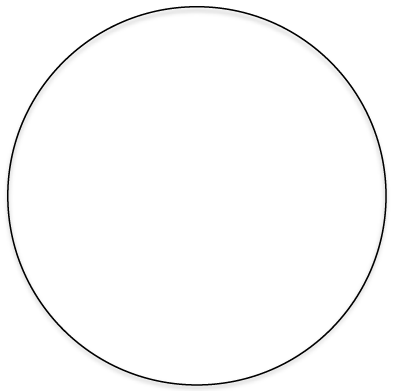Lab Activities
A list of words is provided below that you are expected to learn and label on the models provided. Note that not all models will have some of the organs/structures, so be sure to find them on an alternate model. You must use all the words provided. Using the colored tape provided, write the number that corresponds to the organ/structure and place it on your model. When complete, notify your TA so they may check your work.
For each additional station, directions will be provided for the activity.
Station One: Upper Respiratory
Label the models of this station with the number that corresponds to the appropriate structure of the peripheral nervous system using the colored tape. When you are finished, ask your TA to check your labeling. Before leaving the station, remove all the labels you have placed on the model.
|
#1 nose |
#6 septal nasal cartilage |
#12 nasal conchae* |
#16 laryngopharynx |
#21 soft palate |
|
#2 root |
#7 major alar cartilages |
#12 nasal meatuses* |
#17 lingual tonsils |
#22 uvula |
|
#3 bridge |
#8 minor cartilages |
#13 pharynx |
#18 palatine tonsils |
|
|
#4 apex |
#9 external naris |
#14 nasopharynx |
#19 pharyngeal tonsil (adenoid) |
|
|
#5 lateral nasal cartilages |
#10 nasal cavity |
#15 oropharynx |
#20 hard palate |
|
*There are Superior, Middle, and Inferior parts to these structures.
Station Two: Lower Respiratory
Label the models of this station with the number that corresponds to the appropriate structure of the peripheral nervous system using the colored tape. When you are finished, ask your TA to check your labeling. Before leaving the station, remove all the labels you have placed on the model.
|
#1 larynx |
#8 corniculate cartilages |
#15 esophagus |
#22 alveolar sacs |
#29 middle lobe |
|
#2 epiglottis |
#9 cuneiform cartilage |
#16 carina |
#23 alveoli |
#30 cardiac notch |
|
#3 vestibular folds |
#10 cricothyroid ligament |
#17 primary (main) bronchi |
#24 L/R lungs |
#31 horizontal fissure |
|
#4 vocal folds |
#11 cricoid cartilage |
#18 secondary (lobar) bronchi |
#25 apex of lung |
#32 oblique fissure |
|
#5 thyrohyoid membrane |
#12 cricotracheal ligament |
#19 tertiary (segmental) bronchi |
#26 base of lung |
#33 hilum |
|
#6 thyroid cartilage |
#13 tracheal cartilages |
#20 respiratory bronchioles |
#27 superior lobe |
|
|
#7 arytenoid cartilages |
#14 trachea |
#21 alveolar ducts |
#28 inferior lobe |
|
Station Three: Muscles of Respiration
Label the models of this station with the number that corresponds to the appropriate structure of the peripheral nervous system using the colored tape. When you are finished, ask your TA to check your labeling. Before leaving the station, remove all the labels you have placed on the model.
Muscles of Inspiration
|
#1 diaphragm |
#2 external intercostals |
#3 scalenes |
#4 sternocleidomastoid |
*Make note of which muscles are the primary muscles of inhalation, and which are the accessory muscles.
Muscles of Exhalation
|
#5 internal intercostals |
#6 external oblique |
#7 internal oblique |
#8 transverse abdominis |
#9 rectus abdominis |
Station Four: Histology
Sketch the slides available for today’s lab and specify the magnitude at which you are observing/ sketching. Be sure to identify and label your sketch with the corresponding structures listed beneath each slide.

Lung
Terminal bronchioles, Respiratory bronchioles, Alveolar ducts, Alveolar sacs, Alveoli
Station Five: Lung Dissection
- First, identify the trachea and observe if it is flexible or stiff, does it collapse in on itself? Note the ringed structures along the trachea that support it and allow it to stay open. Identify any other structures along the outside of the lungs and trachea such as the pleural membrane or larynx if still attached.
- Lay the lungs where they both lay flat on the table. Using the dissecting scissors make a cut along the frontal plane beginning at the top of the trachea and working your way down to the branching of the primary bronchi.
- Cut along one of the bronchi, along the corresponding lung until you make a complete frontal plane cut.
- Use the pins provided and label as many structures as you can identify. Your TA will come around and ask you to identify the pins you have placed.
- Before leaving the station, remove all the pins you have placed.
*If you are the last table to use this station, be sure to clean off the dissection kits in the lab’s sink.
Station Six: Flow of Oxygen and Pulmonary Circulation
As a group, determine the path that oxygen travels starting from the nostrils to the alveoli. Be sure to identify where along that path each of the structures on the vocabulary list is located.
As a group, determine the route of pulmonary circulation. Be mindful of the fact that several structures are directly connected to the heart. Label the models/posters of this station with the # that corresponds to the appropriate vessels involved in pulmonary circulation using the colored tape. When you have finished, have your TA check your labeling. Before leaving the station, remove all of the labels you have placed on the models/posters.
|
#1 pulmonary trunk |
#2 pulmonary arteries |
#3 pulmonary capillaries |
#4 pulmonary veins |

